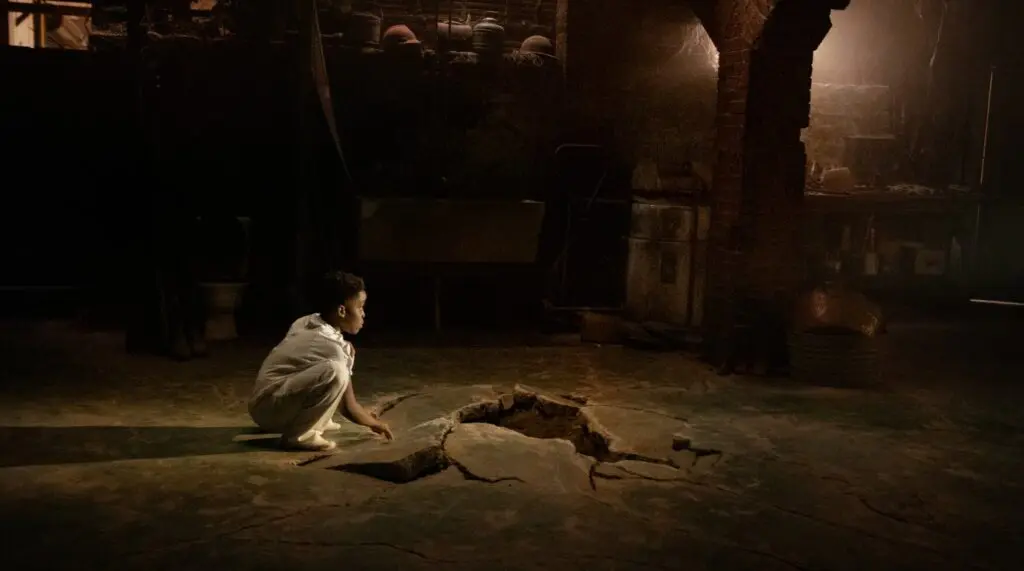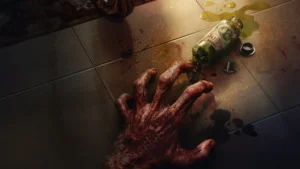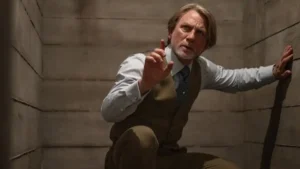The Deliverance is not only about the ending. There is an abundance of themes and meanings that lead to holistic answers with many truths. While some critics and audiences have reduced the horror movie to a simple exorcism story, I disagree. I believe Lee Daniels intended to raise a conversation within the movie, highlighting a gap between religious awakening and social issues and extensively a secularist society versus one run by the Church. The horror movie runs with a 2-truth narrative system.
My article will address the ending but also weave the meaning behind key parts of the story. I will begin by addressing the story’s base and then extrapolate it into wider meanings and themes.
Establishing The Broken Home
“The Broken Home” is the absolute minimum that the story of The Deliverance provides. Throughout the movie, it’s implied but not ambiguous. From a film analysis perspective, it’s essential that the story’s framework is understood as it ties into the overall theory.
It’s established that Ebony and her children have a tarred past. The movie implies that Ebony has a history of alcohol and drug problems.
The family also has an “absent father” who has caused resentment—he chose to serve in the military. Ebony’s oldest children appear to have a strong relationship with their father and show a lot of distaste for their mother, which is typical of a broken home.
The father serving in the military is not a story component that is a coincidence—it implies that the other parent needed or had discipline and needed to break up the relationship with the mother, implying she is ill-disciplined.
Alberta, Ebony’s mother, has joined a church, bringing a strong religious presence to her life. However, they have a broken relationship, too, which comes to the surface in tense conversations. Alberta also needs discipline and a sense of purpose.
As an underlying theme, The Deliverance seeks to make the audience understand that even at a basic level and removing any demonic presence, the family was subject to a broken home and the perils of single motherhood.
It also establishes that the family needs an answer to their demise, which comes from the alternative perspective of the supporting character, Alberta, who seeks God. The demonic presence was not causing Ebony and her family’s downfall — it started before the evil influence.
There’s also plenty of degenerate behavior: while the mother is a suspected alcoholic, she delves into unnecessary promiscuity during her daughter’s birthday, teasing other men at the party.
Her mother does the same but more courteously to the situation in a more romantic fashion with a man she was already fond of beforehand. Again, the movie establishes this is the norm for this family, with a mother-like-daughter dynamic.
The base elements of the story lead to something more profound—they provide meaning, which the rest of this analysis will aim to explain.
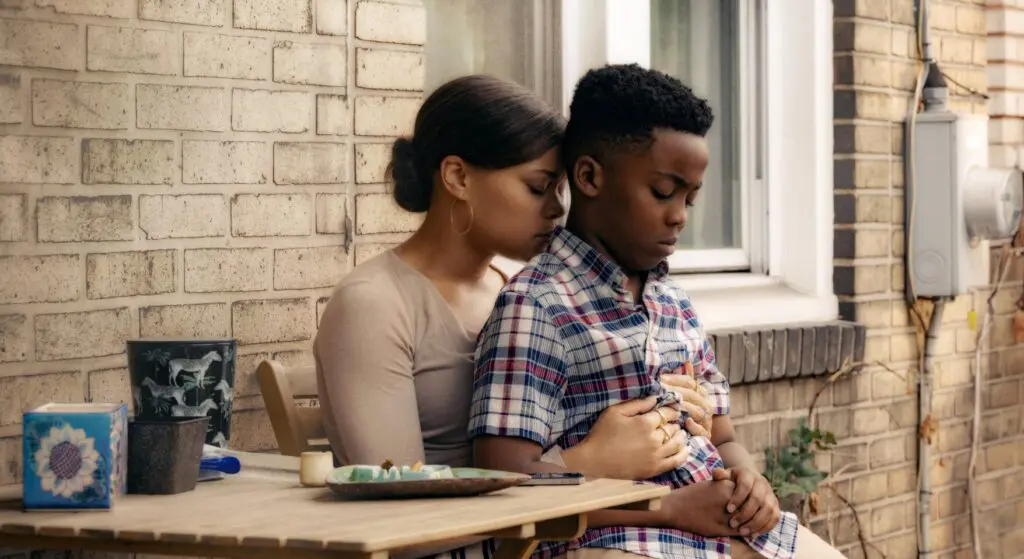
(L to R) Andra Day as Ebony and Anthony B. Jenkins as Andre in ‘The Deliverance’ (Credit – Netflix)
Finance and Social Issues
The Deliverance couples “The Broken Home” with “Financial and Social Issues,” which we need to raise before we tie in the demonic presence haunting Ebony and her family.
The movie establishes that Ebony moved her family into a new home for a fresh start, which is a common sign of a dysfunctional, broken parenting set-up. It implies that the mother believed a change would result in something positive without any deep psychological changes from within.
A broken home usually leads to financial issues, which Ebony shows and implies throughout the movie, with bills that cannot be paid. However, it is revealed that Ebony does secretly pay for the chemotherapy for her mother, Alberta. The film establishes that even though the character shows many signs of degeneracy and bad parenting, there’s hope—she’s a good person.
This part of the film is the first time you see light in Ebony, and you believe in hope for the character.
However, all this overlaps with the involvement of Child Protective Services. Representing them is Cynthia, who has had a past, too. Her son died by accident, and she blames herself for not paying attention. This gives her the power of intuition: she senses when a parent is letting their children down.
She’s the intuitive character the audience needs. While demonic happenings occur, an intuitive character like Cynthia confirms to the audience that two truths can exist. Remember, the sole purpose of this analysis is to argue that the movie proposes a two-truth system that encourages a broader thematic meaning.
Ultimately, this leads to a junction in the story where a smelly, dead black cat is found in the family basement. This serves as an omen in the story, likely leading to the demon but signaling that the family’s misfortunes are a product of their past and present.
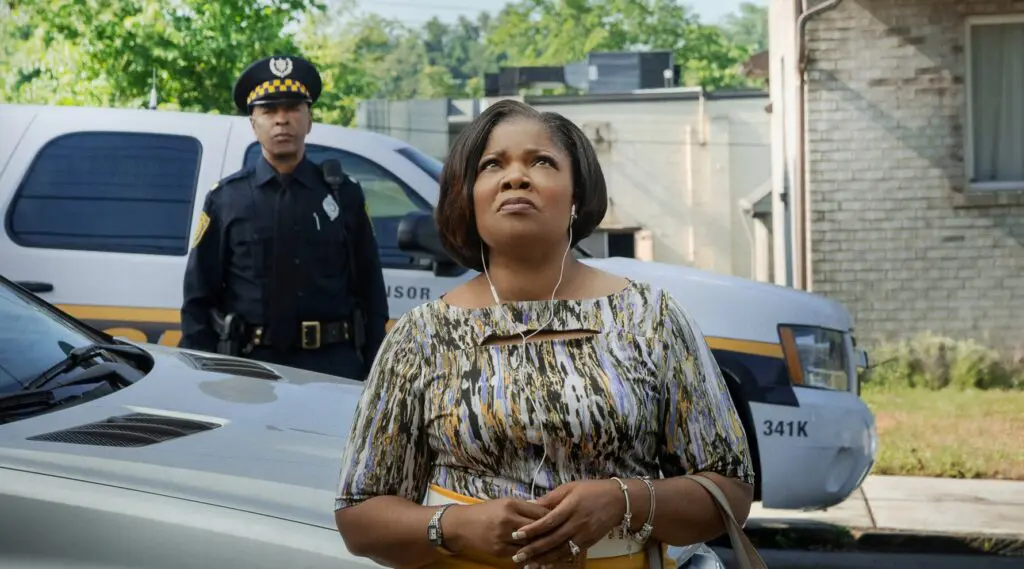
Mo’Nique as Cynthia Henry in ‘The Deliverance’ (Credit – Netflix)
A Dark Presence and Signs of Abuse
The movie’s ambiguous moments come when the evil within the house starts to manifest alongside the social issues. The Deliverance delivers the two-truth system again by introducing elements that can derive from a broken home or a deadly demon — “A Dark Presence and Signs of Abuse” follows on from “The Broken Home” and “Financial and Social Issues.”
Marks and bruises appear on the children, which Ebony cannot answer for to Child Protective Services; disturbing incidents occur after Shante’s birthday party, with loud banging, and Ebony is accused of throwing her children against the wall. Again, you never see these incidents happen.
Following this, the children’s behaviors increasingly get worse, and it extends to the school, from allowing period blood to drip through their clothes to eating their own excrement. Psychological evaluations of the children follow.
However, these events are not a coincidence or indicative of demons being present in the household, though they could be. It is also a strong sign of child abuse in the household. “Hurt people hurt people,” and there’s a cycle of trauma present in the story: it’s heavily implied that Alberta abused her daughter, Ebony, when she was a child.
The children exhibiting this behavior are a mirrored sign of abuse and demonic occurrences. The director is clever in showcasing how they interlink. Again, the “two truths can exist” theory remains.
Escalation of the Hauntings
Of course, eventually, the movie reaches a natural junction where the demonic occurrences strongly overlap the themes of broken homes, financial and social issues, and signs of abuse — it’s time for the “Escalation of the Hauntings.” The overlap comes from the supporting character, Alberta, who chooses to hang a cross in the house. After seeing Nate trying to drown Dre in the bath, Alberta, who usually provides optics for Ebony’s behavior, changes course and moves towards the evilness within the house.
An apostle appears, warning Ebony that the evilness in her house is not new and that another family experienced tragedy too in the same home, and Lucifer, the devil, is behind it.
The change of direction serves as the beginning of the third act of the movie, but it’s important to remember the other themes. The apostle never tells Ebony that this former family was broken, which implies that Ebony’s circumstances are unique despite the demon terrorizing her.
The evil peaks within the movie when the demon, via Dre, kills Alberta.
Alberta, being the first death of the family, is important but resoundingly sad. The death was purposeful. She was the only character who had turned to Jesus Christ, and she implied that she had changed aspects of her life to be a better person.
There’s a reason the demon turned to her first. The devil does not side with believers. It fears the believers, which is why the cross was set on fire, leaving it blackened.
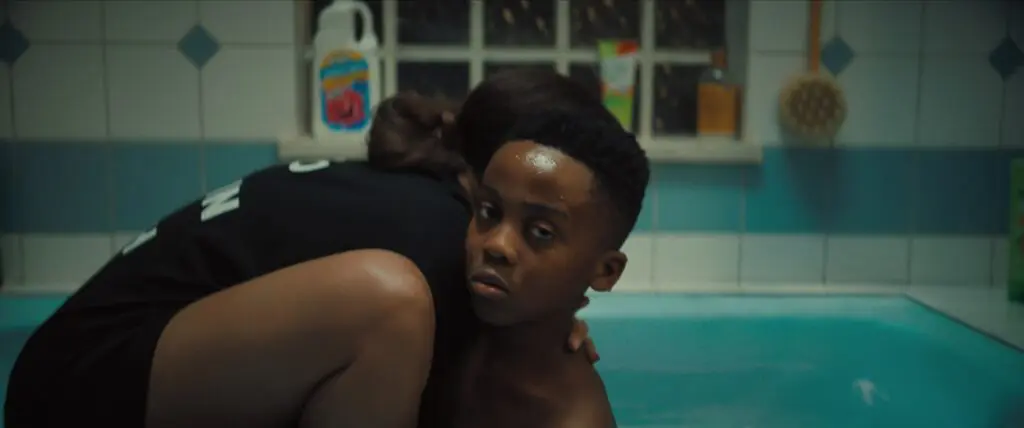
(L to R) Andra Day as Ebony and Anthony B. Jenkins as Andre in ‘The Deliverance’ (Credit – Netflix)
The Deliverance Ending – The Holy Awakening
With Ebony’s children placed in Church foster care and Dre under sectioning in the hospital, Ebony has no choice but to work with the apostle to take down this demon with an exorcism. Themes of accepting Jesus Christ are now extremely strong in the story.
Ebony frees Dre from the hospital and returns home to start the exorcism.
It’s from here that the story interweaves the previous themes. During the exorcism, Dre transforms into Ebony’s mother, Alberta. The first test. Ebony has to withstand the harsh, venomous words coming from someone who looks like her mother; it’s a horrific reminder of what she had to endure from her mother when she was a child.
But the story and its theme would only work if Ebony faced the demon alone, giving the apostle the path to die, which she does. The apostle tells Ebony to face the demon with no fear, indicating that fear has held her back from making changes in the past.
Dre transforms into Ebony herself, meaning that Ebony has to face herself. The demon is her demon. It’s a powerful mirror. All her choices in her life that led to her broken home, bad parenting, financial and social issues, the absent father, and a fractured relationship with her mother boiled down to this exorcism, where she sees an image of herself.
The themes of secularism versus religion are rife in this scene. Ebony has to remove the fear of facing the demon and accept that the old life was not sustainable—a life without purpose, principles, and meaning.
Ebony embraces the name of Jesus Christ and banishes the demon in His name, and it is with that that the holy spirit takes hold of her. She looks awakened and enlightened — the previous themes and story arcs led to this key event, “The Holy Awakening.” Her face transforms like she’s seen the truth. And at this moment, she speaks fully, in tongues, banishing the demon back to where it came, down the hole in the basement.
The demon is gone, and Dre is alive.
Secularism Versus Religion
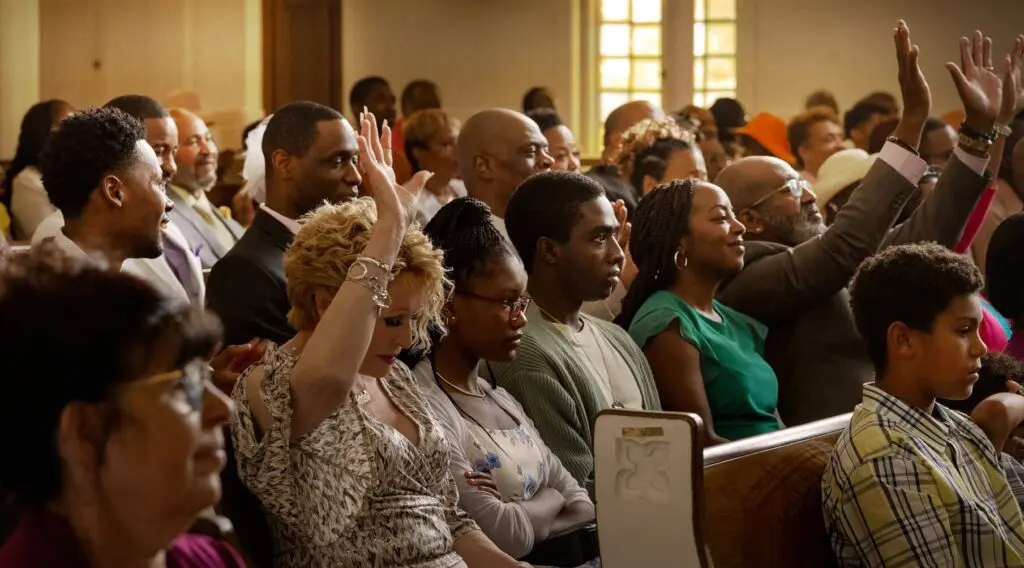
(L to R) Glenn Close as Alberta, Demi Singleton as Shante and Caleb McGlaughlin as Nate in ‘The Deliverance’ (Credit – Netflix)
The Deliverance makes an appealing argument of “Secularism Versus Religion” in a horror environment. All of Ebony’s circumstances were birthed from her lack of faith, and the byproduct of that resulted in a life of turmoil. Her secularist life provided too many wide-ranging choices and less duty, which resulted in a terrible home and an untrustworthy mother.
The demon is, in a sense, a coincidence. Ebony required the demon to have an awakening that improved her circumstances. The movie plays with the idea that “God moves in mysterious ways.”
The movie parses the character apart; she’s suspicious of abusing her children, she enjoys drugs and alcohol, she participates in promiscuous behavior, it’s implied she’s a single mother due to her behavior against the father, and her financial woes have deepened because of all of this.
Her mother, Alberta, represented her future. A woman who accepted her sins but tried earnestly to move forward and live life through God. This is why Ebony resisted her so aggressively.
The only Ebony could break the cycle was to accept Jesus Christ into her life, and when she did, the very fabric of her dark universe began to fall apart and let through light.
The ending of The Deliverance is heartwarming in many ways because Ebony may have suffered, but she’s accepting God’s will. She believes that if God wants her to, she will have custody of her children again.
She also decides to reconcile with her children’s father again, signifying that she is not complying with a worrying societal norm of absent fathers in the family home: another secularist problem in society.
Her face is softer, too – her faith has given her strength and kindness.
The movie explains that six months later, Ebony successfully regains custody and states that it is inspired by the life of Atoya Ammons. The haunted house was bulldozed in 2016, but strange occurrences continue to be reported around the property.
But regardless of the real-life story, Lee Daniels had an objective here: to raise the conversation of life choices and faith intertwining.

